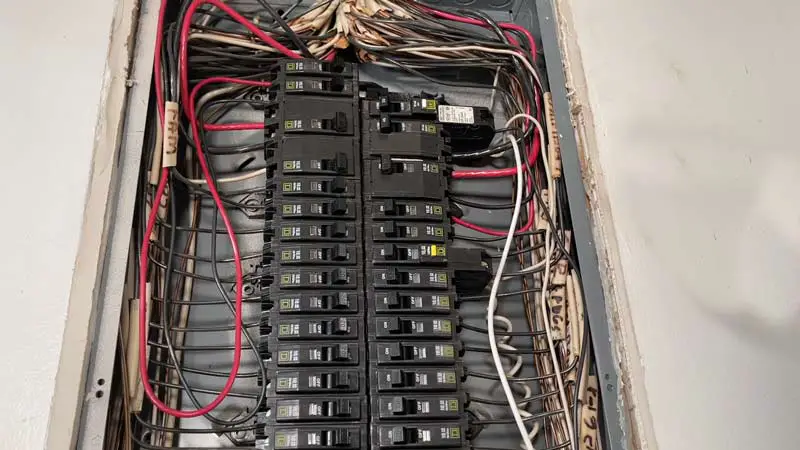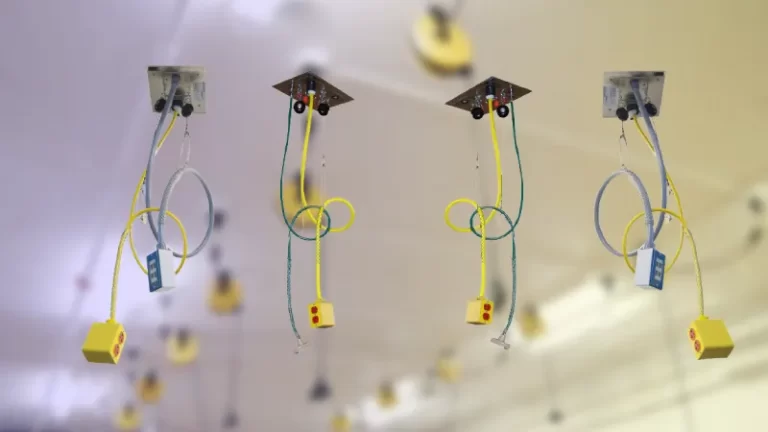How Do You Identify A Challenger Electrical Panel

If you have a Challenger panel, it’s important to open your cover to check for signs of overheating. Discoloration at the mid-right bus bar is an indicator of overheating and can be fixed by replacing parts as needed.
Checking the challenger panel status is a good way to stay updated on system malfunctions or repairs in progress. Knowing your challenger panel’s location will help you avoid potential problems in the future. Make sure you regularly inspect all hardware components for signs of wear and tear – this includes challengers too.
You'll Learn About
How Do You Identify A Challenger Electrical Panel?
If your home has a Challenger panel, you should open your cover to check for signs of overheating. Overheating can be seen at the mid-right bus bar on a challenger panel due to discoloration.
If you have a challenger panel, make sure to keep an eye out for signs of overheating and take appropriate action if necessary. Open your cover to see if there are any indications that your home’s cooling system is not performing as it should – like excessive heat or discolored wires – and act accordingly.
Circuit Breaker With The Word Challenger Printed
A challenger electrical panel is identified by a black circuit breaker with the word “challenger” printed on it. This type of panel is designed to withstand higher loads and provide increased protection against power outages.
To identify a challenger panel, look for the black breaker with the word Challenger printed on it. If you experience an outage or notice any problems with your electrical system, be sure to check for a challenger panel before calling in a technician.
Make sure that all of your appliances are compatible with this type of electrical system by checking the label on your appliance’s housing.
Overheating
A challenger electrical panel is generally identified by a mid-right bus bar that appears to be discolored and overheated. If your home’s wiring feels warm or you see signs of overheating at the mid-right bus bar, it may be time for a challenger panel replacement.
You can replace an aging challenger electrical panel yourself with some easy DIY instructions – check out our guide for more information. Be sure to schedule a service appointment if you notice any problems with your home’s wiring; not all issues can be fixed onsite.
Keep an eye out for warning signs such as heat buildup or unusual noises – if something looks off, don’t hesitate to call in professionals.
Signs Of Overheating
If you have a challenger electrical panel, inspect the cover to see if there are any signs of overheating. Checking for overheating can help identify and fix the issue before it becomes more serious.
Challenger panels are typically identified by their unique color or design. You may also be able to spot warning signs like melted plastic or scorching wires with a simple inspection- even if your panel is not labeled as such.
In some cases, replacing your challenger panel may be necessary due to overheating issues- so make sure to get expert advice first.
How old are Challenger electrical panels?
The Challenger Panel was a popular choice for electrical installations between the 1980s to 1990s. It was brought about by Zinsco and both manufacturers released recalls due to safety hazards that were posed in some cases.
In 2003, after production had ceased, the panel was no longer available for purchase or use.
What breakers are listed for the Challenger panel?
If you are looking for part numbers for breakers that are specific to the Challenger panel, you can find them here. These breakers will protect your car’s electrical system in the event of a power outage.
- Challenger panels require a BR/C breaker or a Connecticut Electric Panel Breaker. These breakers are specifically designed for use with these types of vehicles, and should only be installed by a qualified technician.
- Make sure that the breaker is properly installed and tested before you use it. Breakers can fail if they are not properly wired or installed, so make sure to get someone who knows what they’re doing to do this work for you.
- Be careful when shopping for a breaker because not all of them are created equal – some may be more susceptible to failure than others. You want to make sure that you find one that will fit your specific needs and won’t cause any problems down the road.
- Always keep in mind that different readers are built differently, so even if two breakers look exactly alike, one might actually be much more durable than the other- check reviews online before making your purchase. Finally, never overload an electric panel – overloading can lead to serious electrical damage.
Who made Challenger electrical panels?
Champion’s electrical panels were made by Delco. This company was founded in 1884 and is still going strong today. They produce a wide range of car parts, including the electrical panels for Challenger models.
In 1973, GTE-Sylvania created the Challenger electrical panel, which aimed to produce a high-end electrical service for vehicles. This panel was famous for its excellent bus bar designs and was sold in hundreds of thousands of units over the years.
In the ’80s and ’90s, GTE-Sylvania was well known for its excellent bus bar designs. These bars are used to connect different parts of an engine together and are often seen as one of the most important components of a car’s Electrical system. Sold in tens of thousands at a time, this iconic electrical panel is still popular today thanks to its good quality standards and dependable design.
Do challenger panels need to be replaced?
If you notice any flashing, blinking, or other strange behavior from your light fixtures when the panels are not in use, it may be time to replace them.
Depending on the model of your home and its electrical system, a defective challenger panel can create dangerous voltage fluctuations and even result in a fire.
You don’t have to spend a lot of money replacing just one panel – often all that’s needed is a new set of replacement panels provided by your homeowner’s insurance company.
It can be easy to do yourself – all you need is some basic knowledge about electricity and tools like an electric screwdriver (which most homeowners should already possess).
Saving money isn’t the only reason why getting a challenger panel replaced makes sense; doing so also protects your family from potentially serious electrical issues down the road
Can you use GE breakers in a Challenger panel?
If you are looking to replace your old panel with a new one, make sure that the breaker type is compatible. You can use circuit breakers from other brands instead of GE if they are compatible.
Make sure your Challenger is able to support older-style circuit breakers before replacing your panel. GE brand products are often compatible with Challenger panels, but there may be exceptions depending on the model of your home’s electrical system.
What are the different types of electrical panels?
There are a number of different types of electrical panels in use today, each with its own set of benefits and drawbacks. Understanding the different types can help you choose the best one for your needs.
Breaker Panel
A breaker panel is a group of breakers that are used to protect your home from electrical accidents. When something goes wrong with an electric circuit, the breaker will trip and disconnect the power to whatever is causing the problem.
This protects you and your family from potentially dangerous situations.
Fuse Boxes and Circuit Breakers
A fuse box is located in most homes near the main wiring entrance (usually under the floor). It contains all of the fuses required for protection against various types of emergencies, such as high-power surges or fires in specific areas of your home.
A circuit breaker can also be found on a fuse box, but it’s usually larger and has more contacts than a regular fuse does.
Care for uneven voltages that might be killing.
Main Lug Panels
Main lug panels are located beneath each roof line on houses built before 1978 – they’re typically green or brown metal boxes about 4 feet by 6 feet wide with six sets of wires running out of them into different parts of your house (or garage).
These panels provide electricity to specific rooms in your house using relays called “breakers.”
Subpanels
Subpanels are smaller versions of main lug panels – they’re usually just 2 inches thick instead of 6 inches, so they don’t require any special installation hardware like screws or nails when you install them yourself (though professional help may still be necessary if there are many subpanels).
They allow one room in your house to use more than one outlet without routing multiple cables throughout your entire home, which can be helpful if you have a large TV or other electronic equipment that uses lots of energy.
To Recap
A Challenger electrical panel is a newer style of electrical panel that can be identified by its bright colors and contemporary design. These panels are often used in new construction or remodeling projects, and they offer several advantages over traditional electrical panels.
Challenger panels are more efficient and easier to maintain, so they can save you money on your electricity bill.

